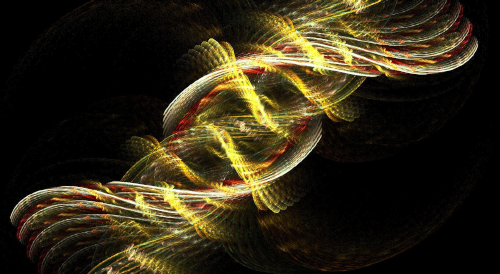
 Spin, as anyone who has ever heard Alistair Campbell speak, is a tricky thing to figure out. Quantum spin – a property many subatomic particles have – is equally confounding, but, if understood, could lead to a powerful new breed of computer technology called spintronics.
Spin, as anyone who has ever heard Alistair Campbell speak, is a tricky thing to figure out. Quantum spin – a property many subatomic particles have – is equally confounding, but, if understood, could lead to a powerful new breed of computer technology called spintronics.
Despite its name, quantum spin does not actually refer to a rotating ball such as the Earth. “The electron is not physically spinning around but it has a magnetic north pole and a magnetic south pole,” says Professor Philippe Jacquod, a researcher in spintronics at the University of Arizona. “Its spin depends on which pole is pointing up. It can point in either of two directions which we usually term up and down.”
This property has aroused the attentions of computer engineers who recognise the similarity with traditional electronics, which use either the presence or absence of an electrical charge to represent binary data. Magnetic spin, with its similarly dual character could, if harnessed, allow smaller, more robust and more efficient computers to be created.
Spintronic computers have many desirable attributes over their electric adversaries. “An electron’s spin is like a small magnet”, says Jacquod. “They retain the information they store even when the device is powered down”. Compare this to electronic equipment, which must always be powered on to avoid losing data. It is this continuous power usage that cause laptops to heat up so quickly.
Determining the spin of a particle 10 billion times smaller than a grain of sand, however, is no mean feat. The answer to this problem, according to research published in the journal Science, could very well come from a quite unexpected source – you. Well, specifically, your DNA.
Normally, one has to use very strong magnets to read and write spin data from an electron. These magnets are too crude, though, to ever be miniaturised to a scale where they could be useful to the electronics industry. DNA, as a large organic molecule, is a strange candidate for a spin detector as it exists in the human world of warmth and breadth that is anathema to quantum effects. Any subtle spin differences in the environment would be expected to be washed out when they interact with the DNA.
DNA has one big advantage, however: its iconic double helix shape. Helixes, like spiral staircases, can twist in one of two directions that are mirror images of one another. This property is known as chirality, and is most easily recognised in the shape of our hands. “The most common structure of DNA in our body is right handed,” says Prof Mark Szczelkun, who studies the changing structure of DNA at Bristol University.
In the study, researchers coated a layer of gold with DNA. Polarised light shone on the gold surface causes electrons to burst out, with the energy needed to ‘run’ up the spiral staircase that is DNA. However, only those electrons with spin aligned to the particular direction of the DNA twist could ascend. The DNA, in effect, is acting as a spin filter and could soon be implemented into spintronic technology.
“For many reasons it is difficult to interface inorganic spin filters with silicon based computers,” says Ron Naaman of the Weizmann Institute, one of the team of scientists working on the problem. “It may be simpler to use chiral organic molecules for this application. We are currently working on this subject and we have encouraging results.”
While hopes are high for this research, it is early days. Whether DNA could be practically used in commercial applications is yet to be seen. “It is not clear yet, how long the DNA would stand as a spin filter when a continuous current is past through it,” says Prof Helmut Zacharias, co-author on the paper and researcher at the University of Muenster. “We will be checking other helical structures with respect to their action on the spin of transmitted electrons to see if a similar effect is seen.”
The quantum world is achingly cold, minutely small and devoid of anything resembling common sense. . Nowhere else would we tolerate objects being in two places at once, travelling back in time or evaporating into thin air in a puff of absurdity. Spin is but one of these incomprehensible aspects of nature that at our vulgar, macroscopic scale, we are too slow and lumbering to notice. The Lilliputian land that is the quantum world is full of these undiscovered treasures that could, if found, could benefit humanity greatly. While most people glaze over whenever quantum mechanics is mentioned, as if it is were a fantastical creation of scientists with no real relevance, we should realise that there is a great deal of meaning to be gleamed. It is not just a load of spin afterall.
![]()
Göhler B, Hamelbeck V, Markus TZ, Kettner M, Hanne GF, Vager Z, Naaman R, & Zacharias H (2011). Spin selectivity in electron transmission through self-assembled monolayers of double-stranded DNA. Science (New York, N.Y.), 331 (6019), 894-7 PMID: 21330541